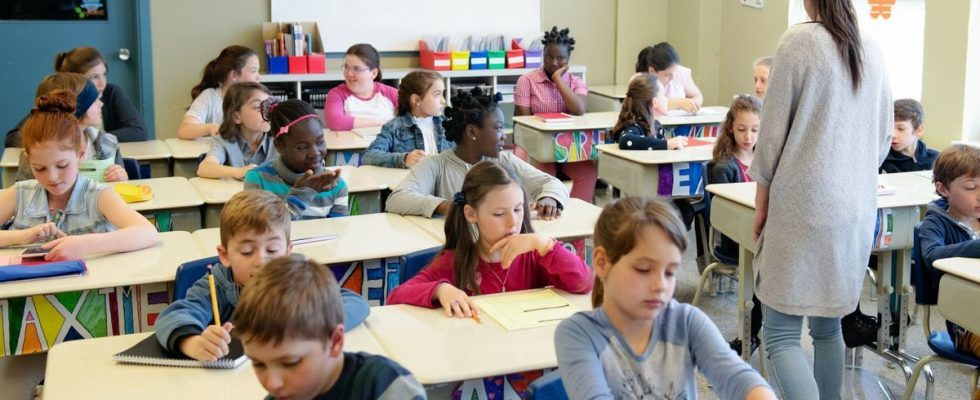Published on
Updated
Reading 3 min.
While around 11% of young French people cannot read correctly, a parliamentary report has just relaunched the debate on the global and syllabic methods, suggesting that the first had “left traces” despite the recommendation in recent years shared by the National education in favor of the second. To understand the controversy, we must return to each of their mechanisms.
The report is around a hundred pages long. Its objective: to take stock of teaching methods for learning to read at school.
One in 10 young French people have reading difficulties
Remember that one in ten young French people have difficulty reading, revealed last June a study by the Ministry of National Education which was based on tests carried out during Defense and Citizenship Day by more than 75,000 participants in 2022. Among those experiencing this problem, it was estimated that almost half were illiterate. Generally speaking, boys were more concerned than girls (12.9% versus 9.1%).
The old debate: syllabic versus global method
Formulating 35 proposals to improve student performance, the parliamentary document revives an old debate, that of the global method which is opposed to the syllabic method, for learning to read.
If the first is no longer supposed to be used by teachers today, the rapporteurs specify that it “has left traces”. More concretely, the report indicates that “teachers’ practices do not always go in the direction of scientific and political consensus“. And to add “most unions perceive the syllabic method as an obstacle to access to ‘fine texts’ or to work on comprehension, since the decipherable texts would be poor in content, particularly at the start of the year“.
The syllabic method makes children more independent
To understand the controversy, we must return to the origins of each method and compare their advantages and disadvantages. Older since it was described in the 19th century, the syllabic method focuses on teaching the relationships between letters and sounds. Clearly, students decipher the words by segmenting them into syllables. To pronounce “cat”, children first learn to decipher the “ch” sound before moving on to the “a”.
When the previously cited MPs brandish the scientific reference, it is because in the 1990s research carried out by Linnea C. Ehri and Elizabeth McCormick highlighted the effectiveness of syllabic reading in the development of phonemic awareness and language skills. decoding. In other words, students are more easily independent by learning to read syllabically.
Global method: towards faster reading?
For the “opponents” of this method, it is convincing when it is aimed at students in difficulty but they consider it unattractive for a young child in the midst of learning. Furthermore, according to its detractors, it makes it possible to decipher a text, but not necessarily to understand it. An argument which was contradicted by the neuroscientist Dehaene in his work “The Neurons of Reading” published in 2007.
In contrast, we find the global method. We therefore no longer decipher each syllable, but we understand the word by looking at it in its entirety. Initiated in the 1930s, it uses images, visual associations and contextual words to help children recognize words without having to break down each syllable. This approach was seen as a departure from more traditional phonetics-focused methods. In the 1970s, studies were also carried out and pointed out that the overall method led to faster reading. Except that conversely, when there are new words, readers have more difficulty understanding and assimilating them.
Combine elements of both methods?
Over the decades, educational recommendations have fluctuated, reflecting debates between the two approaches. The 2000s saw a trend towards a more balanced approach, putting forward the idea that combining elements of both methods could be key to meeting the diverse needs of children. Already in the 1980s, National Education had revised its recommendations to encourage teachers to strike a fair balance between the two methods. In short, it was about tapping into the best of both worlds.

